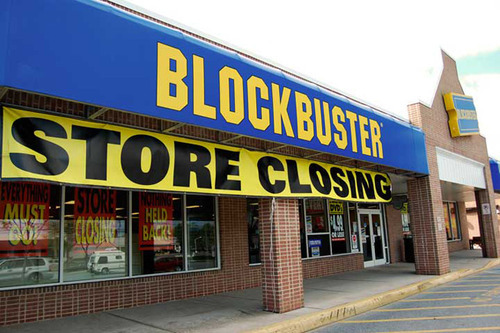
Last week, Blockbuster announced that it was closing all of its brick and mortar stores with the exception of one in Alaska. The company may continue to operate, but it will be virtually unrecognizable. Blackberry also announced that it had failed to find a buyer, is in deep financial and product trouble and is only surviving thanks to investors who have arranged for hundreds of millions of dollars in financing.
And oh yeah, they fired their current CEO who was on the job less than a year. After hearing the news of these two companies, I was immediately reminded of some amazing metrics—close to half of all the companies in the Fortune 2000 in 1980 don’t exist today. In the last three years, we have seen Borders, Syms Clothing, and AMR all go under. There’s more. The average life expectancy for a major corporation in now less than 50 years!
Those of you who have a few grey hairs will remember these once great companies that are now gone—Paine Webber, Eastern Airlines, Compaq and MCI. Now, look at companies that are still around today but may see a similar fate—Eastman Kodak, Dell, and Sears come immediately to mind.
It makes one wonder why some companies thrive over time and others just fade away. To me, it always comes down to the same thing—management. While most senior managers take great pride in their financial acumen, at the end of the day, what matters most is the ability to identify and understand the changes going on all around us.
Companies have to not only adapt, but also lead their firms into new, unchartered territories. That takes courage— a commodity of short supply among many large multi-nationals. It also takes leadership. Managers have to take risks to move their battleships adroitly into new waters. It’s hard to do in this day and age— especially for public companies.
The same holds true of communications firms. Many of the advertising and public relations firms that led their industry in 2000 have either disappeared, been acquired or have merged with others. New firms have taken their place. In 2000, it was all about meeting the challenges of communication via the internet. Today it is social media. Those agencies that fail to adapt and build real social media capabilities will inevitably become the Compaq’s and MCI’s of our industry. To the victor go the spoils.